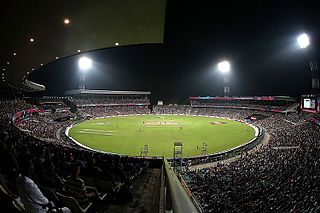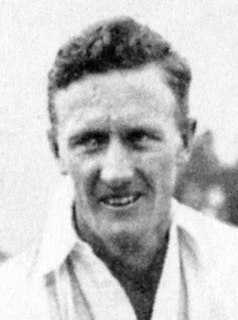| Personal information | |||||||||||||||||||||||||||
|---|---|---|---|---|---|---|---|---|---|---|---|---|---|---|---|---|---|---|---|---|---|---|---|---|---|---|---|
| Full name | Walter Stanley Wilde | ||||||||||||||||||||||||||
| Born | 27 February 1908 Long Ashton, Somerset, England | ||||||||||||||||||||||||||
| Died | 21 August 1968 (aged 60) Clevedon, Somerset, England | ||||||||||||||||||||||||||
| Role | Wicketkeeper | ||||||||||||||||||||||||||
| Domestic team information | |||||||||||||||||||||||||||
| Years | Team | ||||||||||||||||||||||||||
| 1929 | Somerset | ||||||||||||||||||||||||||
| First-class debut | 11 May 1929 Somerset v Worcestershire | ||||||||||||||||||||||||||
| Last First-class | 27 June 1929 Somerset v Kent | ||||||||||||||||||||||||||
| Career statistics | |||||||||||||||||||||||||||
| |||||||||||||||||||||||||||
Source: CricketArchive, 6 June 2010 | |||||||||||||||||||||||||||
Walter Stanley Wilde (27 February 1908 – 21 August 1968) played first-class cricket for Somerset in seven County Championship matches in the 1929 season. [1] He was born in Long Ashton, Somerset and died at Clevedon, Somerset.
First-class cricket is an official classification of the highest-standard international or domestic matches in the sport of cricket. A first-class match is of three or more days' scheduled duration between two sides of eleven players each and is officially adjudged to be worthy of the status by virtue of the standard of the competing teams. Matches must allow for the teams to play two innings each although, in practice, a team might play only one innings or none at all.

Cricket is a bat-and-ball game played between two teams of eleven players on a field at the centre of which is a 20-metre (22-yard) pitch with a wicket at each end, each comprising two bails balanced on three stumps. The batting side scores runs by striking the ball bowled at the wicket with the bat, while the bowling and fielding side tries to prevent this and dismiss each player. Means of dismissal include being bowled, when the ball hits the stumps and dislodges the bails, and by the fielding side catching the ball after it is hit by the bat, but before it hits the ground. When ten players have been dismissed, the innings ends and the teams swap roles. The game is adjudicated by two umpires, aided by a third umpire and match referee in international matches. They communicate with two off-field scorers who record the match's statistical information.

Somerset County Cricket Club is one of eighteen first-class county clubs within the domestic cricket structure of England and Wales. It represents the historic county of Somerset. The club's limited overs team was formerly the Somerset Sabres, but is now known only as Somerset.
Wilde was a tail-end batsman and a wicketkeeper who was drafted into the Somerset side for early matches in May and June 1929 because of the illness of the regular wicketkeeper Wally Luckes. Wisden Cricketers' Almanack noted that Somerset used seven different wicketkeepers during the 1929 season, including Wilde and Luckes. [2]
Walter Thomas "Wally" Luckes, was a cricketer who played for Somerset.

Wisden Cricketers' Almanack is a cricket reference book published annually in the United Kingdom. The description "bible of cricket" was first used in the 1930s by Alec Waugh in a review for the London Mercury. In October 2013, an all-time Test World XI was announced to mark the 150th anniversary of Wisden Cricketers' Almanack.
Wilde's only batting success and the only time he reached double figures in first-class cricket came in the match against Derbyshire at Burton-on-Trent when he made 21 of a last-wicket partnership of 47 with Michael Bennett which still did not manage to prevent Somerset from being forced to follow on. [3] In this game he took three catches off the bowling of Arthur Wellard in Derbyshire's only innings, the best return of his short career. When the amateur Michael Spurway became available to keep wicket in mid-season, Wilde, as a professional, was dropped and did not play first-class cricket again.

Derbyshire County Cricket Club is one of eighteen first-class county clubs within the domestic cricket structure of England and Wales. It represents the historic county of Derbyshire. Its limited overs team is called the Derbyshire Falcons in reference to the famous peregrine falcon which nests on the Derby Cathedral. Founded in 1870, the club held first-class status from its first match in 1871 until 1887. Because of poor performances and lack of fixtures in some seasons, Derbyshire then lost its status for seven seasons until it was invited into the County Championship in 1895. Derbyshire is also classified as a List A team since the beginning of limited overs cricket in 1963; and classified as a senior Twenty20 team since 2003. In recent years the club has enjoyed record attendances with over 24,000 people watching their home Twenty20 fixtures in 2017 – a record for a single campaign. The local derby versus Yorkshire at Chesterfield now regularly sells out in advance.
Geoffrey Michael Bennett played first-class cricket for Somerset between 1928 and 1939.
Michael Vyvyan Spurway was a British civil servant in the Colonial Service and later a businessman. He also played county cricket for Somerset, and served as a pilot in the RAF in the Second World War.
